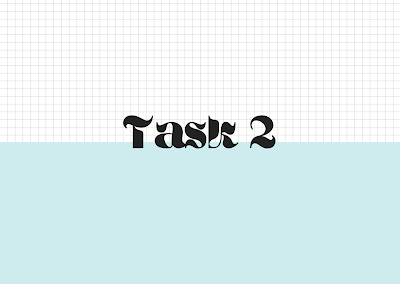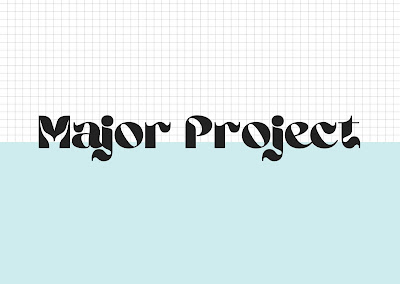Publishing Design: Task #2 — Content Generation
31.08.2021 - 24.08.2021 (Week #2 - Week #5)
Seerat Tayyab Mukhtar Qureshi - 0345576 (BDCM)
Publishing Design
Project #2
Lectures:
The Grid
This is similar to what we learnt in Advanced Typography. The grid is probably the most practical system of typography. The use of the grid is important as it shows that the designer conceives his work in terms that are constructive.
The grid divides a two-dimensional plane into smaller fields or a three-dimensional space into smaller components. The fields of compartments may be the same or different in size.
The purpose of the grid is for solving visuals problems in 2D or 3D. It allows a designer to arrange content in a coherent and functional manner. It creates a sense of compact planning, intelligence and clarity. Information that is presented in clear and logically set out titles and subtitles, texts, illustrations and captions will not only read better but the information will also be retained better. This is a scientifically proven fact.
The grid helps make the user experience seamless. A well-executed design allows the work on the page to do the talking. The grid is a hidden framework behind beautifully constructed architecture.
Conclusively, information that is presented in a clear and logical manner will be retained and understood better. The grid is modular in nature and our responsibility as designers is towards those who are going to experience our works.
Publishing Design: Elements
All publications consist of 3 major elements. Type, colour and image and are held together by formate and grid. When using these 3 elements we must make sure to create variation so that our layout is not predictable. This includes keeping some elements fixed such as typeface while creating variation within how its arranged. Creative use of elements will allow us to shuffle the content in a consistent but varied manner.
The elements in our book will fall into place when we begin to see the varied formulas possible within the grid system. Conclusively, we should try and not to be predictable and surprise the reader on every page. A good book takes its reader on a journey without them knowing.
Instructions:
Module Information Booklet
Content generation
For our project, we need to do a write up of 3000 words on anything we want. It should be divided into chapters and each chapter must have 2 subtexts and 1 pull quote.
Fig 1.0: Content generation
Next, to prepare for this project we did a few exercises with book formatting and spreads.
First, we started by dissecting spreads from the same source and seeing how they reflected in the other spreads.
Fig 1.1: Dissecting spreads
Next, we had to come up with three different margins for our book format.
Fig 1.2: Book margins
We had to pick the one we liked the most and experiment with the columns and guides. I picked out the second margin and went ahead with it.
Fig 1.3: Columns
Using this we then needed to create grid systems.
Fig 1.4: Grid systems
Lastly, we needed to add our text to observe the space and relationship between the layout and the text.
Fig 1.5: Flowing in the text
We also had to prepare some references and ideas for our visuals.
Fig 1.6: My visual references and sketches
From my sketches above, I prepared the visuals for my book. After Mr Vinod's feedback, I added some landscape format visuals. I illustrated some extra ones in case I wanted to change the proportions in the final layout.
Fig 1.9: Visuals Thumbnail, Final PDF
Fig 2.0: Visuals Thumbnail, Final JPEG (1/2)
Fig 2.1: Visuals Thumbnail, Final JPEG (2/2)
Fig 2.2: Overwhelming, Final JPEG
Fig 2.3: Hope, Final JPEG
Fig 2.4: Almost, Final JPEG
Fig 2.5: Systems of Power, Final JPEG
Fig 2.6: Powerless (A), Final JPEG
Fig 2.7: Powerless (B), Final JPEG
Fig 2.8: Reflection, Final JPEG
Fig 2.9: Childhood Anxiety, Final JPEG
Fig 3.0: New Environment, Final JPEG
Fig 3.1: Majboori, Final JPEG
Fig 3.2: The Burden of Dreams, Final JPEG
Fig 3.3: I Am Not The Protagonist, Final JPEG
Fig 3.4: Infinity, Final JPEG
Fig 3.5: Reminder, Final JPEG
Fig 3.6: Perspective, Final JPEG
Fig 3.7: Try, Final JPEG
Fig 3.8: The End, Final JPEG
Fig 3.9: The World, Final JPEG
Fig 4.0: Reaching, Final JPEG
Fig 4.1: Sunrise, Final JPEG
Fig 4.0: Visuals, Final PDF
4. Feedback
Week #3: Mr Vinod gave us all feedback on our visuals. He said that we need to look at it more from an abstract fine art perspective rather than a graphic design or commercial artist. He said our visuals should convey emotions and feelings and grab the attention of people. He said my visuals were good I need to level them up a little bit and then get working on them as soon as possible.
Week #4: Mr Vinod said that he liked my visuals and they were a bit like a story within themselves. He mentioned that I should try and create some other sizes as well and not limit myself to portrait. I could try to make one the size of my spread, so two pages.
Week #5: Mr Vinod gave us general feedback on how to proceed to design our book now. We have completed all the content generation and can move on to Project #3.
5. Reflection:
Week #3: It is starting to get a little stressful now as the deadlines are creeping closer, especially for the illustrations. They need to be perfect because they make up a big part of the book. Nevertheless, we have to just keep trying our best and managing our time. By next week I am planning on at least completing at least half of my illustrations so that will help me stay on track.
Week #4: I'm pleased with Mr Vinod's feedback on my visuals. I really like the way they turned out and I think they fit my story well and at the same time not being a literal visualisation. I enjoy drawing so this was quite fun to do especially since the story is something I wrote myself and is quite personal to me.
Week #5: I am quite pleased with all my content. I think my story and visuals go well together and I am looking forward to designing and laying out my book.
6. Further Reading
Picture This: How Pictures Work by Molly Bang
In this book, children's books illustrator Molly Bang describes how pictures are formed and perceived. She describes that we see pictures in context, and our reactions to them largely depend on the context. This relates to what Mr Vinod told us, where he said that the picture should intrigue the viewer and after reading the story they are able to gauge the meaning and it's not explicitly illustrated.
She uses the example of Red Riding Hood and illustrates it using basic shapes and colours to show how our emotions differ from the form of the pictures.
Red Riding Hood
The rounded-off corners of the "mother" figure make her a softer figure instead of a sharp triangle. It makes her more huggable and stable— like mothers are. The use of pale purple makes sure that Red Riding Hood remains the protagonist of the story because of the bold red. Bang uses purple because purple has red in it and it maintains a connection between the mother and daughter.
She states that “...so far this is not the most moving or inspired picture we have ever seen. But it has shown some of the ways that shapes and colours affect us emotionally. It also lays the groundwork for a better understanding of how to go about making the next picture, of the woods.”
The book goes on in detail to illustrate some parts of the story in a similar manner and it's very interesting to see how basic forms and shapes can start to take meaning after we understand the context. It highlights the importance that visuals hold in books and how we can make them as impactful as possible.



























Comments
Post a Comment